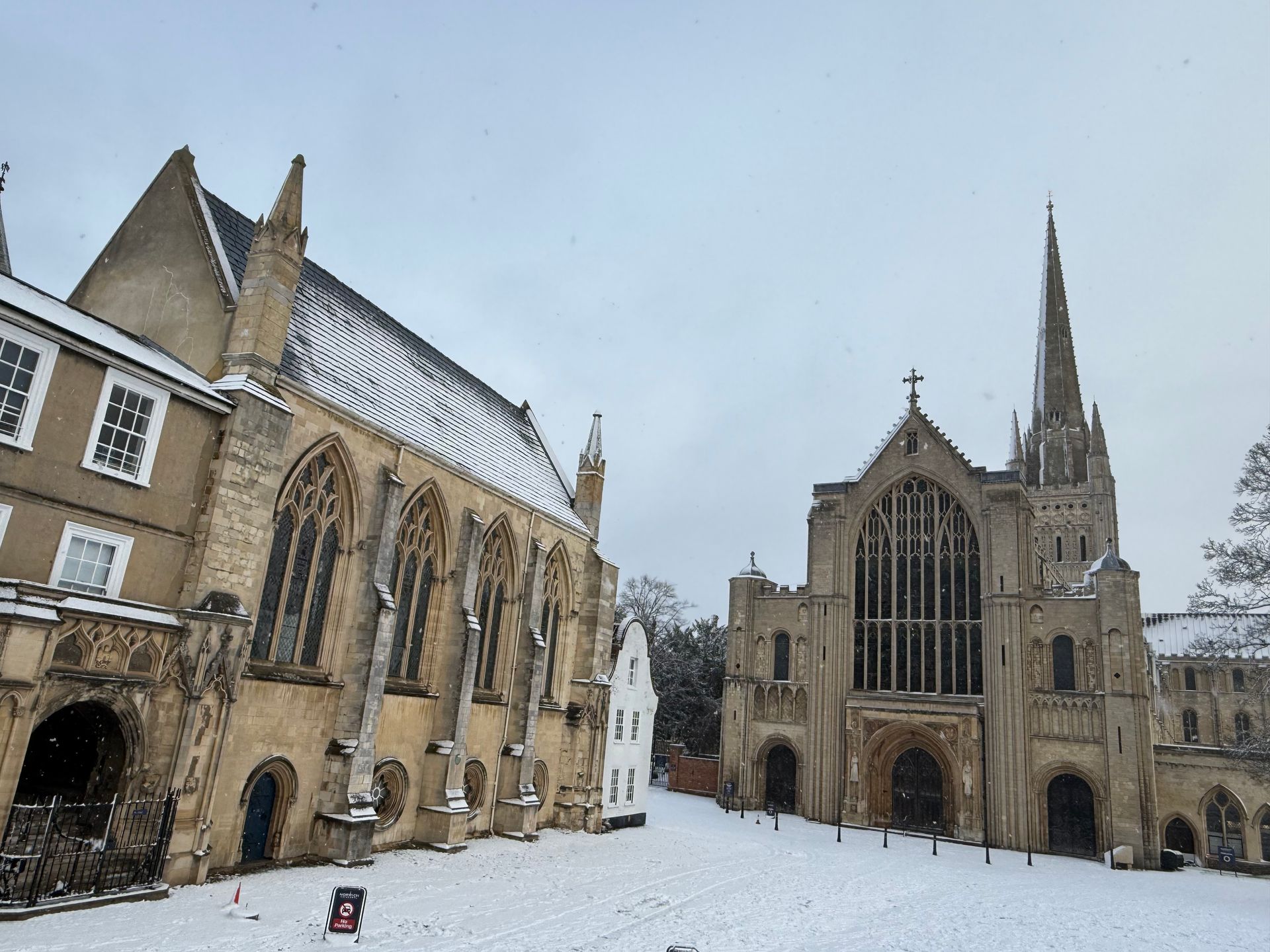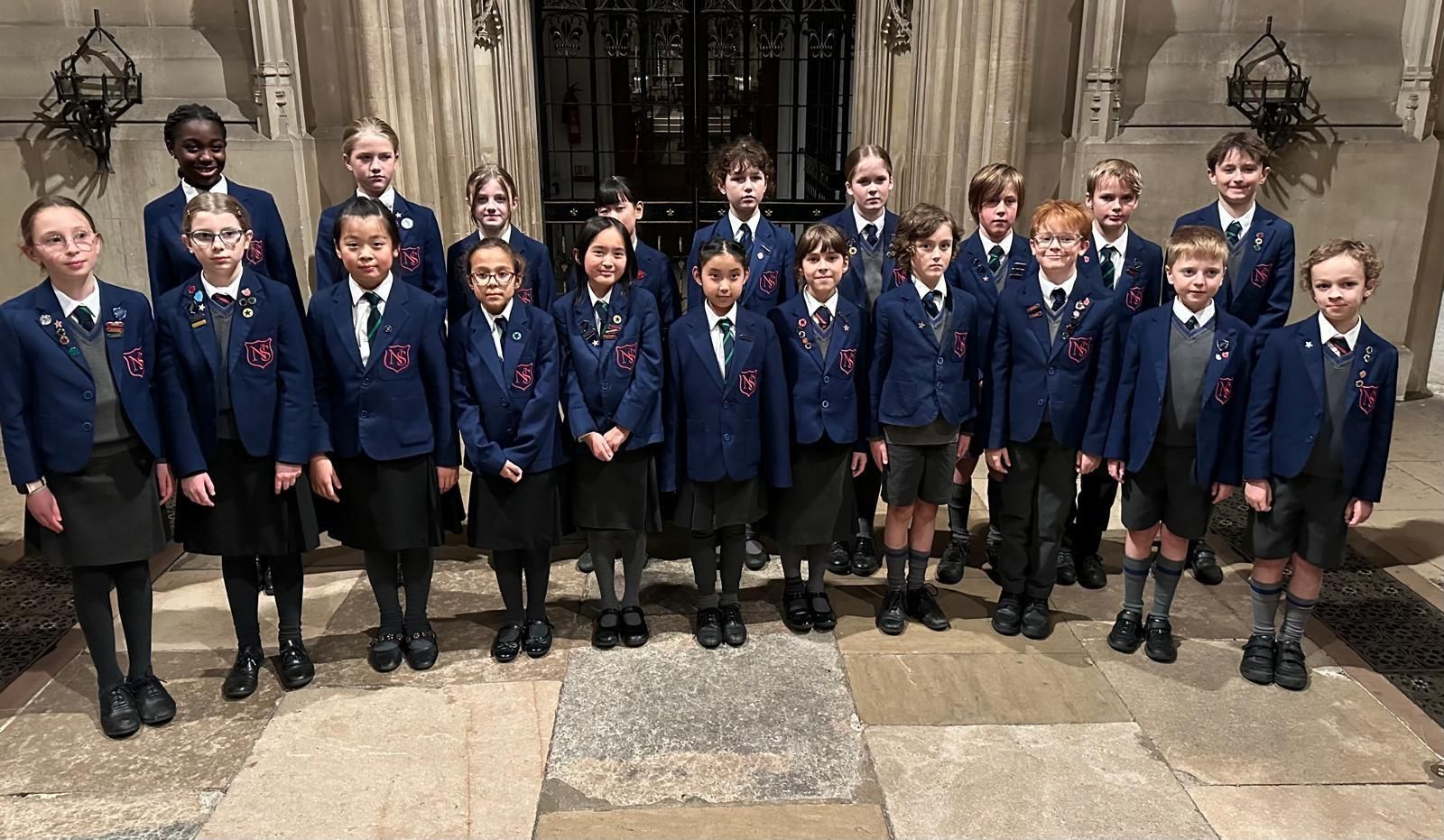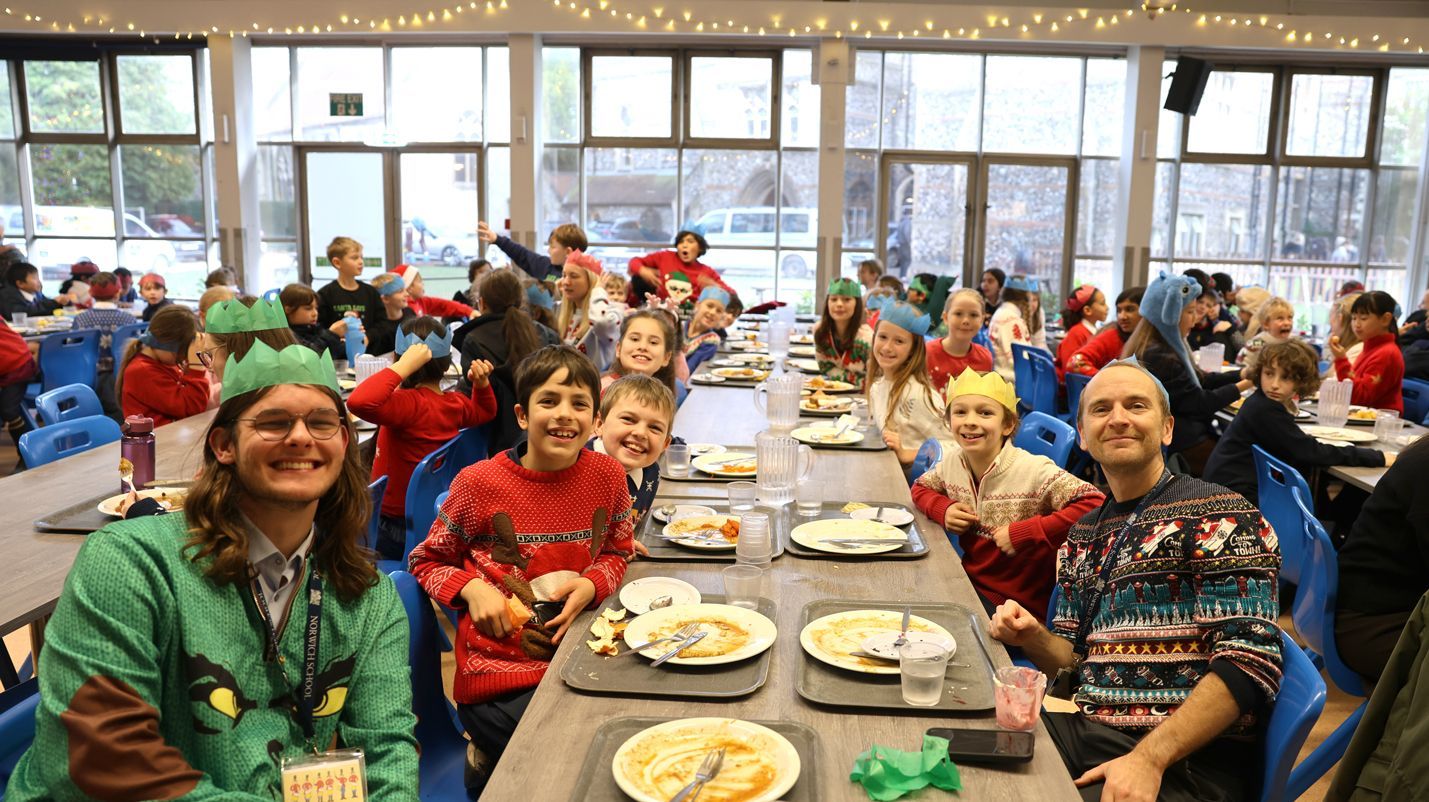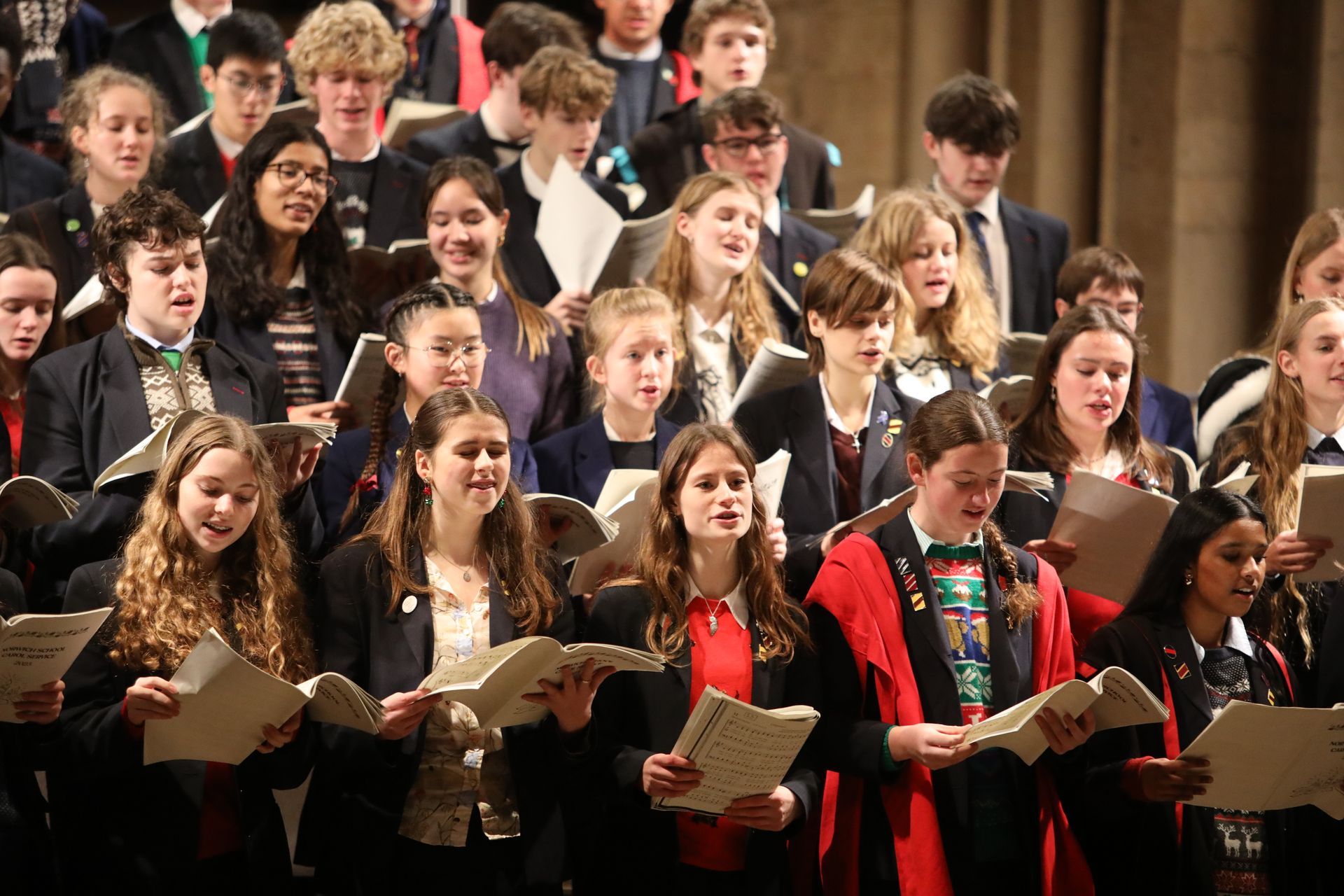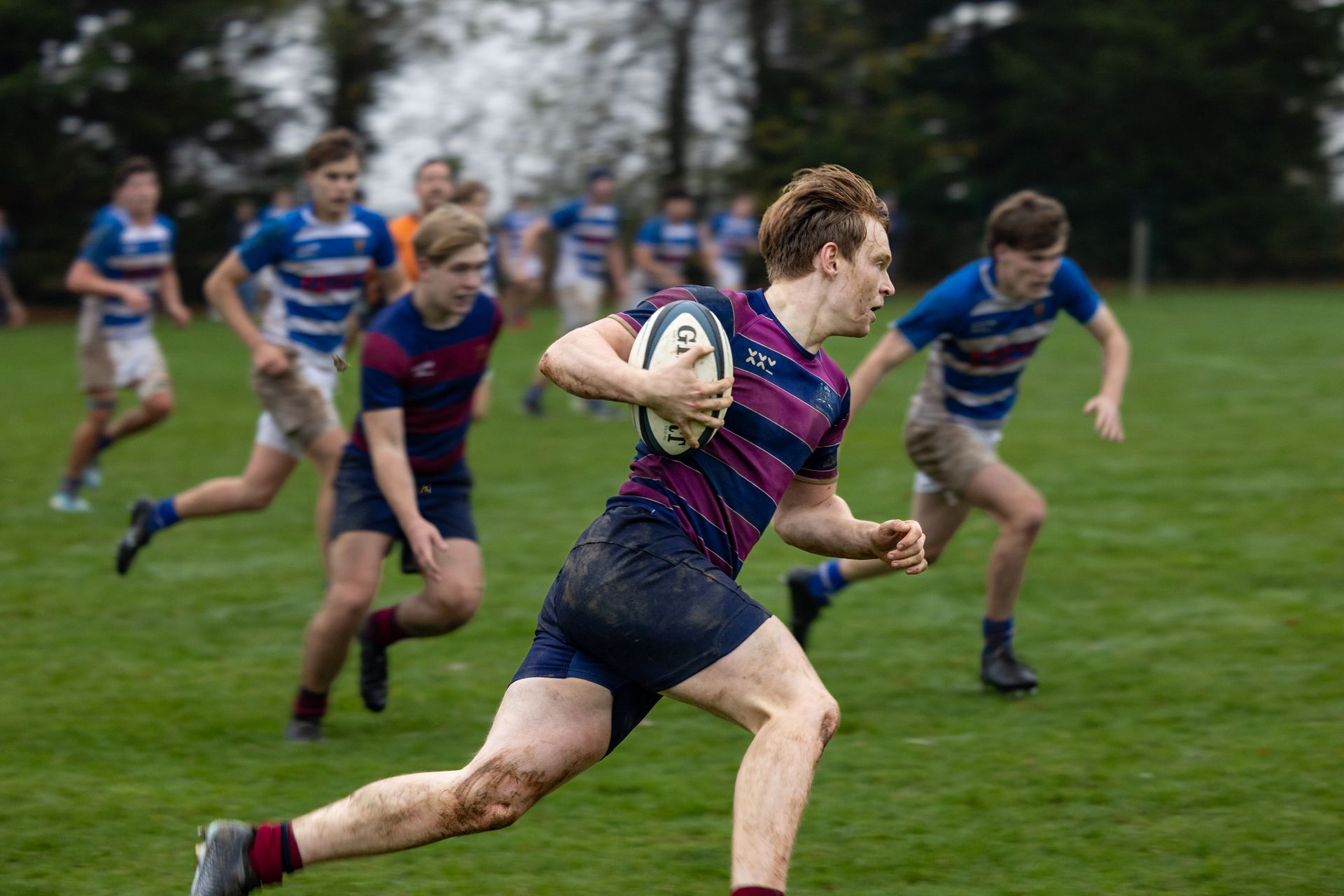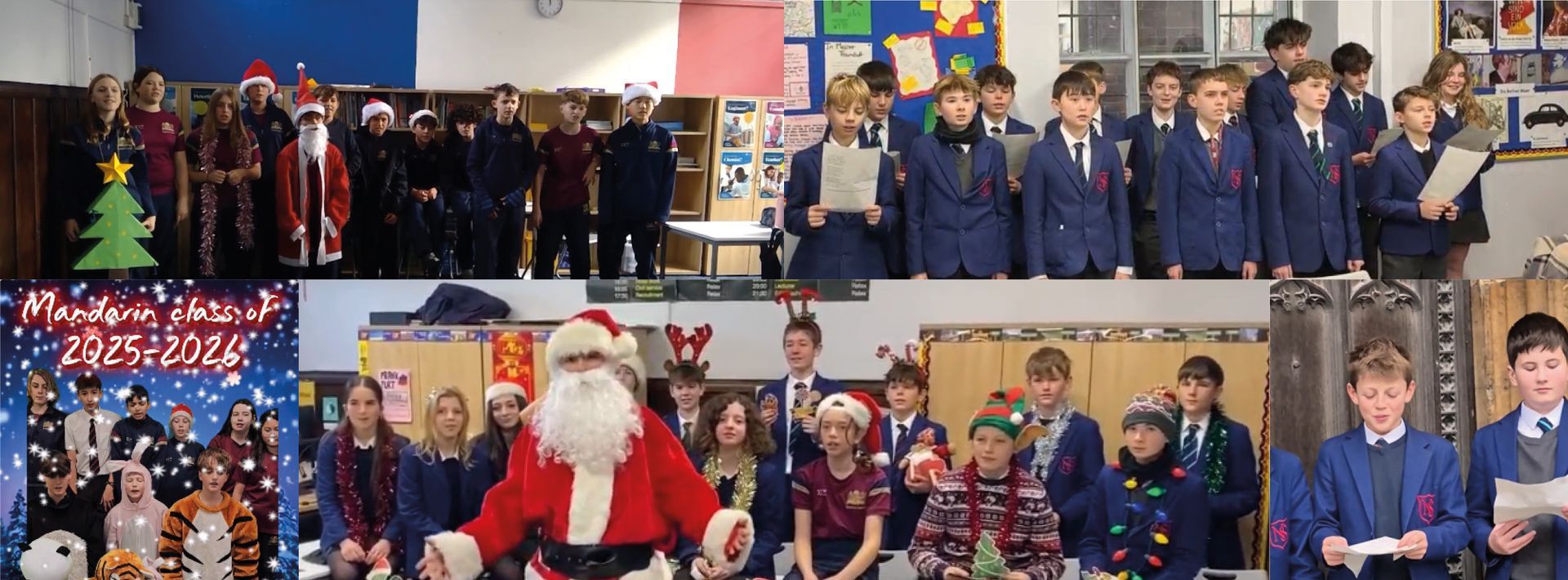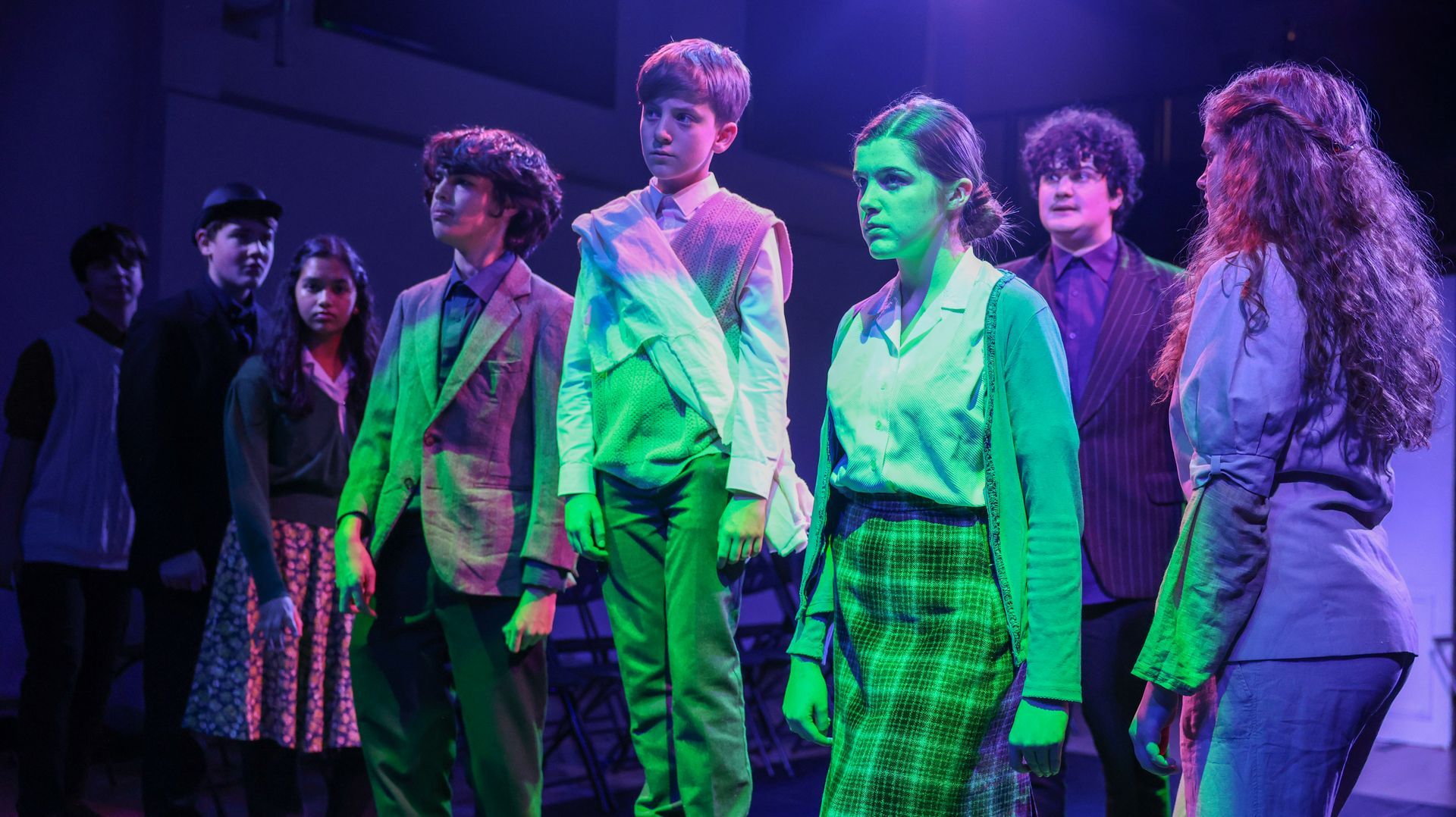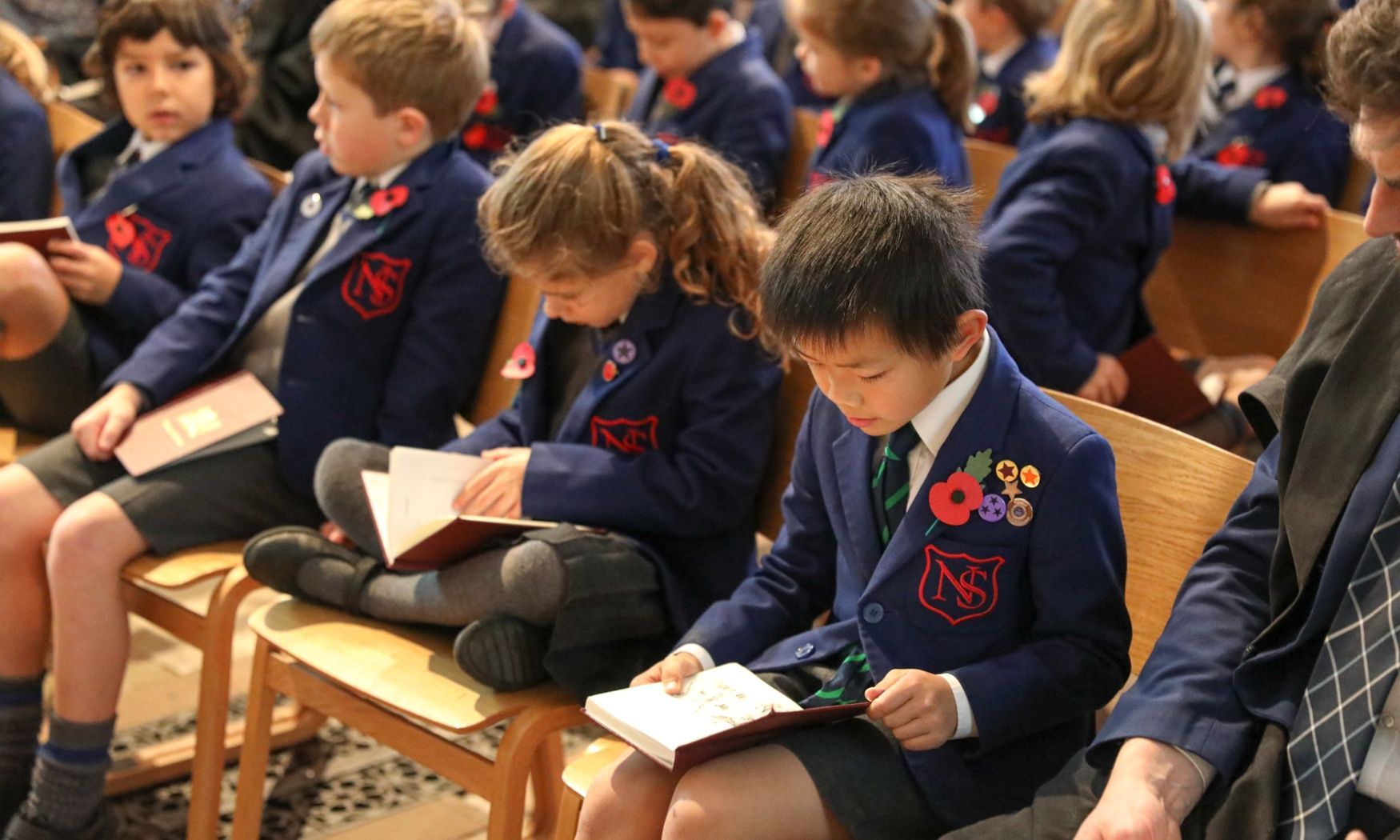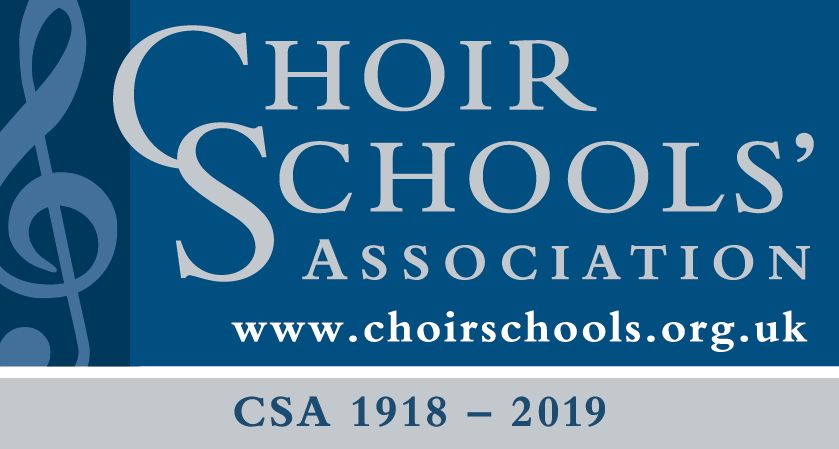NORWICH SCHOOL MARKS REMEMBRANCE DAY
November 11, 2022
This morning the whole school community came together in the cathedral to mark a very special Remembrance Day. The names of ON’s who lost their lives in the war were read by the house captains, and the address was delivered by Development Director and ON Jonathan Pearson who reflected on a fateful night during the Second World War which shaped the future of Norwich School.
‘We are accustomed to the idea that Remembrance relates to brave soldiers overseas, but without in any way downplaying that, I want to address you today on something far closer to home.
My name is Jonathan Pearson, and I am the school’s Development Director. I am also an ON, celebrating 35 years since leaving Norwich School. The remarkable and true story I relate today has great personal resonance to those of us in the ON community. This is because it occurred in this very building and in the school playground, while the young protagonists were regular Norwich School pupils led by their Headmaster.
My narrative takes place 80 years ago during the German bombing raids on Britain in WWII, known as the Baedeker raids. Until the summer of 1942, the Cathedral Close had escaped quite lightly from bombing raids, whereas other parts of Norwich, such as St Stephens and St Benedicts, had sustained major damage. However, all was about to change on the night of Saturday 27th June 1942.
At around 2am, the firewatcher positioned on the Cathedral sounded the alarm, as German bombers approached, dropping their deadly cargo of incendiary bombs. Within seconds, it is estimated that 850 incendiary bombs rained down on The Close, a terrifying noise that would readily have been heard from the cold floor of the school’s Crypt under our Chapel where around 30 boys and their Headmaster were sheltering overnight. During the Second World War the Crypt was a much-frequented air raid shelter.
The Headmaster, a grandly named Theodore Acland, quickly rounded up the School House Fire Party, comprising school pupils serving as fire wardens. They scrambled out of the pitch black of the Crypt, jumpers pulled over pyjamas, to a scene of utter carnage in the Upper Close: acrid yellow smoke; sirens ringing out; the chocking smell of burning. Try to picture in your mind how absolutely terrifying this sight must have been to our school pupils who were still only your age. Young pupil Derek Griffiths commented:
“Everywhere was full of smoke and there were an awful lot of fires, including an enormous one in the playground. We did not know where to begin. We’d been instructed how to deal with one incendiary bomb, but nobody had ever told us how to deal with a hundred of them at the same time”.
It soon became clear a major fire had started in the corner of the school Quad nearest the Maid’s Head, which they struggled to dampen down with buckets of sand. Over the coming hours, working furiously under the leadership of Mr Acland, the science room on the playground, the bike shed, the coal store, the gymnasium (now the Blake Studio) and the area at the back of the New Buildings were all saved.
However, unbeknown to anyone, a fire lay smouldering in the attic of the old Lodge. This Lodge was a fine Jacobean school building located between the New Buildings and the Blake Studio. This is now the Dyers’ Lodge site. By all reports, it was a delightful, elegant 17th century building of fine proportions. The school had just spent much of its precious financial resources on a major refurbishment. The old Lodge comprised four classrooms on the ground floor, with a debating room and panelled masters’ common room on the first floor, complete with collections of irreplaceable books, artworks and a precious school archive.
By the time the fire was discovered, the building was already doomed, as intense heat and smoke thwarted all attempts to save it. Stunned schoolboy Derek Griffiths recalled:
“It went up like a tinderbox, engulfed in a mass of fire within about 20 minutes and became a burning ruin in no time”.
Another pupil Derek Hawkins recounted the instinctive and daring actions of fellow pupils on seeing the building alight:
“I just remember going through the main entrance, picking up anything considered of value. We just grabbed whatever artefacts we could, as quickly as we could, retiring to a respectable distance to watch it finally engulfed in flames”.
Not for the first time have the names Griffiths and Hawkins taken such prominent roles in school life here.
Just reflect for a moment on the collective grief felt at such a loss; the old Lodge being one of only two classrooms blocks in the school at that time. Imagine your shock if you arrived at school tomorrow to find 40% of all the school classrooms had been destroyed in under half an hour.
Further drama was also being played out elsewhere in The Close that night. School pupils were busy assisting with fire duties at No 68 The Close and adjacent houses. Even more critically, pupils led a major operation attending fires in the roof of the Cathedral, particularly the north transept roof, where a container of 36 incendiary devices had wedged itself between the roof timbers and the vaulting, sending out scalding hot streams of molten lead from the melting roof. It sounds horrendous. Crocodiles of valiant school pupils carried endless buckets of water to the highest reaches of the Cathedral to extinguish the flames.
As an aside, back in 1986 I was fortunate enough to climb to the very top of the Cathedral spire with the Norwich School Local History Group under our leader Dr Paul Cattermole. At ground floor level, the Cathedral feels comfortingly solid, but this is not so the higher up one climbs. Sixteen-year-old pupil Alistair Grant commented on his actions in 1942, with understated fearlessness:
“I have always had a dread of heights and loathed the thought of having to walk along the top gallery, barely three feet wide, with its one slender iron rail between me and the floor 60 feet below. But, I remember staggering in the morning twilight carrying two buckets of water, aware, with sudden astonishment, that I was not in the very least frightened”.
Such an adrenaline rush eventually gave way to weariness as the fires were brought under control and as dawn broke. The threat of existential disaster for both the Cathedral and the School had receded, despite being unable to save the old Lodge on the playground. It would be another 11 years before Dyers’ Lodge rose from its charred ruins, such was the impact of that night’s events on the school’s precarious finances and its morale.
Back to 1942 - a refreshing cup of tea and a hefty dollop of school porridge were soon served up and, quite astonishingly, Saturday morning school continued as normal! The Dean generously made four rooms available for teaching in his Deanery and Senior French Master, Mr JH Brown, himself a veteran of the trenches in World War I, also known as ‘Bruiser Brown’, expressed to the young firefighters the school’s pride in a good night’s work.
At our Trafalgar Day service last month, Ann Kalu and George Schofield gave their examples of leadership models for our consideration. I would like to add one of my own, that of Theodore Acland, Headmaster on that tumultuous night - the man who supervised the rousing of the pupils from the Crypt and co-ordinated their courageous efforts. He had led the school since 1930, witnessing citywide bomb devastation including the complete destruction of his beloved Lodge; he had shouldered the endless worry of maintaining the rhythms of school life in wartime; he had endured frequent disturbed nights and concerns for pupil safety and wellbeing, slept in air raid shelters and led the firewatch duties of the schoolboys in his care. Even in peacetime his health had been frail; the herculean efforts of that night took a further heavy toll. The Norvicensian magazine relates the reluctant and sad acceptance by Governors of Mr Acland’s resignation in November 1942, aged just 52 – his spirit utterly broken. In a moment, as the names of the 52 ONs who fell in WWI and the 51 from WWII are read out, I ask that you have Theodore Acland and his courageous party of Norwich School firefighters in your remembrance and prayers today, as we commemorate the 80th anniversary of such momentous events.
On that night in June 1942, the selfless bravery of pupils and staff at Norwich School was exemplary. After all, they were just ordinary members of the school community, just like you and me. They had saved two of the city’s finest institutions, Norwich Cathedral and Norwich School, in order that we may peaceably enjoy them today. Do reflect on the debt of gratitude every one of us owes to them as part of our acts of remembrance here today.'
